If you’re a fan of turn-based RPGs, chances are you’ve been eyeing Sea of Stars for quite some time now. It’s clear that was true, as the title has already sold over 250,000 copies. Sea of Stars is a prequel to Sabotage Studio’s previous title, The Messenger, set thousands of years before the game.
With Sea of Stars, Sabotage looked to make an attempt at a turn-based title. Turn-based RPGs are a timeless style of game dating back to the NES, what many consider to be the main origins of mainstream console gaming. They offer a simplistic yet fun way to play, giving you time to think while reacting to enemies and your party in combat. It is a perfect genre for both casual and avid gamers. Along with that, the genre tends to be narrative-driven rather than focused on combat. This game is no different and keeps you wanting more, even after a long session.
I’ve been playing video games for 20 years now, and this genre is the one that spearheaded my fandom for gaming. Aside from my emotional investment, what makes this game stand out in a very saturated genre? To sum it up, there is a ton, from the story to the combat, that completes the package.
A Great Adventure With Plenty of Depth

Right in the beginning, you meet a being named The Archivist. He is the narrator of this tale. You check in with him sometimes after moments in the game. It helps the pacing a lot and isn’t something commonly seen in games. The Archivist was basically shown every time a new arc in the story was about to begin.
We follow the journey of three friends, Zale, Valere, and Garl. Zale and Valere left Garl to train and become Solstice Warriors while Garl learned on his own to be a strong warrior among the common folk. Zale is a boy who is a blade dancer class. He’s very ambitious and driven. Valere is a girl who has a monk fighting style. She’s more cautious but driven, similar to Zale. Gale is a warrior-cook who supplies the team with buffs, whether it be mana or health regeneration. He’s a real highlight in this game as he adds comedy and feels relatable. As a group, they must fight off minions left by The Fleshmancer.
Together, the three have to be the light in the world, so to speak. They travel to different islands, fighting off monsters and minions. New friends are even made along the way. These characters add some missing personality that is missing within the main cast, so they are welcome additions while on the journey. While you navigate your way through the plot, you find yourself becoming invested in the bond that the three main protagonists have.
You go to several different areas along the way. The islands were all pretty neat. Each area is very different from one another, which keeps things from feeling stale or repetitive. In several areas, there are puzzles you must do in order to progress to the next area. Some are harder than others, but they are fun and add something to the game that not every turn-based RPG has.

There are many twists and turns along the way. I’m glad they did this, as it keeps the story from becoming predictable. While the story is great, it’s worth noting that there is a lot of dialogue between the main protagonists, almost too much. It actually takes around thirty minutes before you are off in the world fully engaging in combat. I’m someone who needs to be doing something constantly, or my attention can drift. Bare with it, though, because there is plenty of good stuff here, and the battle system balances everything out perfectly.
This is truly a story about fate. The developers do a great job of ensuring it’s interwoven throughout the game’s duration. It led to a perfect culmination that left me satisfied with the overall package that was presented. Despite not totally loving the main characters, I really appreciated the love and effort put into the story.
Classic Combat With A Timely Twist
The battle system in Sea of Stars is really well done overall. It’s very similar to other retro turn-based RPGs I have played in the past. Some extra things are added that set it apart from games you would compare it to. For example, when attacking, you can press a button while the hit lands to deal extra damage to enemies. This also works when being attacked. If you press a button when an attack is being done, you will take reduced damage. It isn’t necessarily a must to beat this game, but it does reward players with technical combat skills. An instance where it helped me was when I was first learning the game on the second boss.
The combat is refreshing as each fight usually differs from the other. Whether that be going against several enemies at once, a solo boss, or a boss with some cronies, it’s fresh throughout the game. I really enjoyed the variety of enemies it had to offer.

On your base team, you have a blade dancer, a monk, and a support character. This allows your team to have a nice balance in just about every fight. That being said, you will lean on certain classes more than others for certain fights. The attacks are impressive-looking and have little mechanics within some of them. For instance, Valere has a boomerang-type attack called Moonerang that will keep going if you time your button presses. I often did this attack because it was fun to see how many times I could do it in succession. My least favorite character to use was Garl, which is funny, considering he was my favorite character in the story. While he doesn’t really have any fun mechanics, he does make a mean sandwich.
There is also a leveling system similar to most you’ve seen before. You gain experience points and level up after a certain amount is obtained. Every time you level, all stats are raised, but you can acquire an extra stat boost. You have to think carefully about which extra stat you want because you can’t undo it. For example, I go for extra defense and health on Gale because he’s a support role. As long as I keep him alive, I can keep the rest of my team alive with his health regeneration skills. This offers a nice customized touch to each level up, as it allows you to finely tune stats that need to be addressed across your team.

Another thing worth mentioning is the gear system. You can earn gear by purchasing it with in-game currency or from treasure chests while exploring islands and caves. The gear offers a defense or attack boost mainly. Ideally, you would strategize who gets what, as some characters naturally have less health than others. Additionally, some characters naturally deal more damage than others.
All in all, the battle, leveling, and gear system are all great in this game. Although I wish Garl were more fun to use in battle, I have no gripes with the overall combat, and the developers did a wonderful job making it as robust and customizable within the confines of a retro-inspired turn-based RPG.
The Not-So-Bright Stars
While this game excels in tapping into nostalgia and fun, it does lack in some areas. Let’s start with the main cast. Zale and Valere felt rather simplistic with their character arcs; there is nothing that strays from the norm that we have in this genre. Garl adds some much-needed character and dynamic to the group, which kept me engaged despite my lack of attachment to the other two main characters.
The soundtrack is solid, but unfortunately, it’s only that. The best songs in this game are usually during boss fights, so you don’t get to hear them much. The battle theme is super repetitive after a while, so I found myself trying to speedrun through some battles. In fact, the only repetitive part of combat is the music that plays during the evergreen battles throughout the game. The only time you hear music change is during a boss battle or when you go to a new island for the first time. That being said, the songs you hear on islands fit the scenery and vibe overall.

Aside from the soundtrack being solid at best and the main protagonists being formulaic, there isn’t much to complain about with this game. The gripes I have are very few, but the main protagonists being pretty basic is a big one because they are the focus of the game. It’s a good thing they introduce characters throughout the journey that add personality and a nice dynamic to the group, but it’s hard to overlook the writing sometimes.
A Shining Star in 2023
Sea of Stars is a captivating retro-inspired RPG that successfully combines nostalgia with innovative gameplay elements. You can tell it is inspired by predecessors such as Chrono Trigger. The engaging story, well-crafted battle system, and diverse settings create an enjoyable gaming experience.
I couldn’t end this review without detailing the beautiful visuals. It has that classic pixel look you may have grown up with as a kid. The piece I love the most is the colors; they really pop out due to the great usage of lighting. The islands also looked different and neat. That all being said, it fits the vibe of the world you’re exploring through and through. I found myself in awe at points where plants and shapes would glow in dark places, almost as if those plants were trying to say something.

This is truly a success story for Sabotage Studio. The studio has shown with this release that you don’t need to reinvent the wheel to deliver a fun experience. Many games nowadays reach for the stars with bold and bright new ideas, yet I enjoyed my time with the game despite it not being anything striking. They clearly took inspiration from classics and added their own twist to give fans something new to enjoy.
While the main characters could benefit from more depth, the addition of Garl adds charm and humor to the group. This game isn’t perfect, but despite some minor issues with the soundtrack and character personalities, the game’s overall quality shines through. There is enough content here and different character builds you can mess with that it offers great replay value. Sea of Stars is a must-play for fans of classic turn-based RPGs, offering a fresh and enjoyable adventure that will keep players engaged throughout their journey.
Disclaimer: Sabotage Studio provided Final Weapon with a Steam copy of Sea of Stars for review purposes.


